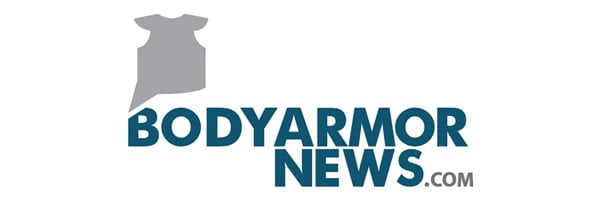The ongoing War in Ukraine has highlighted critical lessons for the design, deployment, and effectiveness of modern body armor. As both Ukraine and Russia have adapted their gear in response to battlefield realities, the conflict offers valuable insights for armor developers, military planners, and end-users alike.
This three-part series explores those insights by tracing how body armor systems have evolved before and during the war:
-
Part 1: Status Quo Antebellum – An overview of the pre-war landscape and initial capabilities.
-
Part 2: Pressure – An analysis of combat casualty data, common threats, and real-world armor performance.
-
Part 3: Evolution – A look at how both nations iteratively upgraded their armor in response to field conditions.
In this first installment, we examine the state of body armor in both Ukraine and Russia from 2014 to 2022, outlining their respective starting points, developmental paths, and the emergence of operational parity by the late 2010s.
I: Status Quo Antebellum, 2014-2022
Ukrainian troops initially faced severe equipment shortages at the outbreak of hostilities in 2014, largely reliant on obsolete, heavy Soviet vests like the 6B5 (over 12kg). This spurred rapid domestic development and procurement, leading to emergency orders for tens of thousands of locally made vests, notably the “Korsar” series from Temp-3000. Early models faced quality challenges, such as insufficient neck coverage on the Korsar-4 and exterior fabric that was not flame-resistant, requiring modifications. Despite production bottlenecks and material-sourcing issues, Ukraine achieved full armor issuance to engaged units by 2017.
The standard Ukrainian vest became the Korsar-M3, featuring an external carrier with a soft 18-layer aramid ballistic insert providing Class 1 protection (Ukrainian DSTU standard) against pistol rounds – meaning that it’s rated to stop 123gr. 9x19mm FMJ at 1320 fps, and steel-cored 91gr. 9x18mm Makarov 57-N-181S at ~1130 fps – over approximately 0.57 m² torso coverage.

The Korsar incorporated external pockets for hard armor plates, allowing upgrades from Class 2 up to Class 6. (7.62x54mmR B-32 API, a small step below NIJ RF3/IV). The most commonly issued plates offered protection roughly equivalent to NIJ RF2, stopping 7.62×39 mm, 5.45x39mm, and 7.62x54mmR ball rounds. A full vest with two Class 6 ceramic plates weighed around 8.8 kg. Subsequent iterations (M3M, M3S) improved ergonomics with quick-release systems and modular components like neck collars and groin flaps, and improved the fabric materials used in the vest’s construction for better durability and flame resistance. Ukrainian field data indicated modern vests significantly reduced lethal torso injuries, with most penetrating wounds occurring outside the plate coverage (flanks or below the vest); on-plate defeats were limited to roughly 10% of such impacts.
Russian forces in 2014 were transitioning from older models (6B23, ~9–10 kg) and the modular 6B43 (up to 15 kg fully equipped) to the new 6B45 vest under the Ratnik program. The 6B45, standardized around 2015, combined a soft Rusar aramid liner (GOST Class 1 fragment protection) with two Class 6A ceramic-composite plates.

These plates were rated to defeat multiple hits from armor-piercing rifle rounds up to and including the same 7.62x54mmR B-32 API. The standard configuration weighed 7-8 kg. An assault variant (6B45-1) could incorporate up to seven plates (including sides, shoulders, groin), in which configuration it weighed ~15kg. All 6B45 vests featured quick-release buckles and modular add-ons. Construction and durability were reportedly good, though field feedback noted ergonomic issues like ventilation.
Thus by the late 2010s Ukrainian and Russian armor systems had converged on similar ballistic performance. Both utilized soft aramid vests for fragmentation/pistol threats and ceramic plates (typically alumina with composite backing) for rifles, reliably stopping standard 7.62mm ball and intermediate AP rounds. Fragment resistance (1g FSP V50 ~550-600 m/s) was comparable. Real-world data from the conflicts showed both armors markedly improved survivability, with fatal torso hits largely prevented or reduced. Both armies also reported a rise in behind-armor blunt trauma when plates held. The primary limitation for both was coverage, with roughly 90% of penetrating wounds hitting unprotected flanks or below the vest. Standard vest fighting weights were similar (7-9 kg), with heavier configurations (12-15 kg) for specialized roles. Both met or exceeded GOST/NIJ multi-hit criteria; Russian GOST 5A/6A explicitly required resisting multiple spaced impacts.
Design philosophies were also similar: Modular systems with optional add-ons. Russian vests integrated dedicated shoulder/thigh protection earlier (even in, e.g., the 6B43), while Ukrainian Korsar offered collars and groin flaps from the start, shoulder modules appearing from 2018 but remaining less common. By the end of the decade, both used durable Cordura-like covers and sealed liners for similar field lifespans. Russia achieved large-scale, centralized standardization (Ratnik) by the mid-2010s. Ukraine’s industry, fragmented initially, ramped up over the decade to meet demand, achieving protective parity by the late 2010s. Battlefield performance confirmed both systems substantially increased survival rates from torso hits, though a full assessment of how they performed and the threat profiles they faced will be published with Part II of this series.









